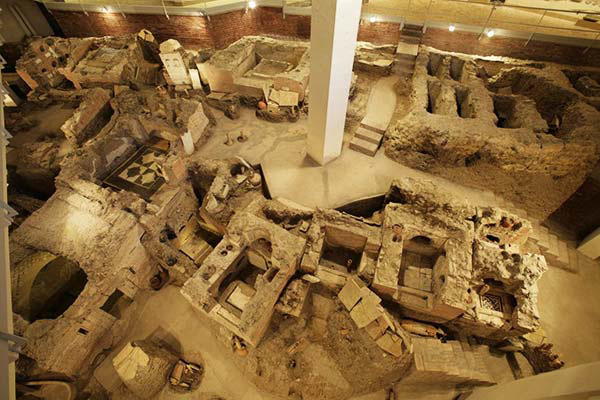Italian folk music has a deep and complex history. Because national unification came late to the Italian peninsula, the traditional music of its many hundreds of cultures exhibit no homogeneous national character. Rather, each region and community possesses a unique musical tradition that reflects the history, language, and ethnic composition of that particular locale.These traditions reflect Italy's geographic position in southern Europe and in the center of the Mediterranean Sea; Arabic, African, Celtic, Persian, Roma, and Slavic influences, as well as rough geography and the historic dominance of small city states, have all combined to allow diverse musical styles to coexist in close proximity.
Italian folk styles are very diverse, and include monophonic, polyphonic, and responsorial song, choral, instrumental and vocal music, and other styles. Choral singing and polyphonic song forms are primarily found in northern Italy, while south of Naples, solo singing is more common, and groups usually use unison singing in two or three parts carried by a single performer. Northern ballad-singing is syllabic, with a strict tempo and intelligible lyrics, while southern styles use a rubato tempo, and a strained, tense vocal style. Folk musicians use the dialect of their own regional tradition; this rejection of the standard Italian language in folk song is nearly universal. There is little perception of a common Italian folk tradition, and the country's folk music never became a national symbol.
Regions
Italy's folk music is sometimes divided into several spheres of geographic influence, a classification system of three regions, southern, central and northern, proposed by Alan Lomax in 1956 and often repeated. Additionally, Curt Sachs proposed the existence of two quite distinct kinds of folk music in Europe: continental and Mediterranean, and others have placed the transition zone from the former to the latter roughly in north-central Italy, approximately between Pesaro and La Spezia The central, northern and southern parts of the peninsula each share certain musical characteristics, and are each distinct from the music of Sardinia
In the Piedmontese valleys and some Ligurian communities of northwestern Italy, the music preserves the strong influence of ancient Occitania. The lyrics of the Occitanic troubadours are some of the oldest preserved samples of vernacular song, and modern bands like Gai Saber and Lou Dalfin preserve and contemporize Occitan music. The Occitanian culture retains characteristics of the ancient Celtic influence, through the use of six or seven hole flutes (fifre) or the bagpipes (piva). The music of Friuli-Venezia Giulia, in northeastern Italy, shares much more in common with Austria and Slovenia including variants of the waltz and the polka. Much of northern Italy shares with areas of Europe further to the north an interest in ballad singing (called canto epico lirico in Italian) and choral singing. Even ballads—usually thought of as a vehicle for a solo voice—may be sung in choirs. In the province of Trento "folk choirs" are the most common form of music making.
Noticeable musical differences in the southern type include increased use of interval part singing and a greater variety of folk instruments. The Celtic and Slavic influences on the group and open-voice choral works of the north yield to a stronger Arabic, Greek, and African-influenced strident monody of the south. In parts of Apulia (Grecìa Salentina, for example) the Griko dialect is commonly used in song. The Apulian city of Taranto is a home of the tarantella, a rhythmic dance widely performed in southern Italy. Apulian music in general, and Salentine music in particular, has been well researched and documented by ethnomusicologists and by Aramirè.
The music of the island of Sardinia is best known for the polyphonic chanting of the tenores. The sound of the tenores recalls the roots of Gregorian chant, and is similar to but distinctive from the Ligurian trallalero. Typical instruments include the launeddas, a Sardinian triplepipe used in a sophisticated and complex manner. Efisio Melis was a well-known master launeddas player of the 1930s.
Songs
Italian folk songs include ballads, lyrical songs, lullabies and children's songs, seasonal songs based around holidays like Christmas, life-cycle songs that celebrate weddings, baptisms and other important events, dance songs, cattle calls and occupational songs, tied to professions such as fishermen, shepherds and soldiers. Ballads (canti epico-lirici) and lyric songs (canti lirico-monostrifici) are two important categories. Ballads are most common in northern Italy, while lyric songs prevail further south. Ballads are closely tied to the English form, with some British ballads existing in exact correspondence with an Italian song. Other Italian ballads are more closely based on French models. Lyric songs are a diverse category that consist of lullabies, serenades and work songs, and are frequently improvised though based on a traditional repertoire.
Other Italian folk song traditions are less common than ballads and lyric songs. Strophic, religious laude, sometimes in Latin, are still occasionally performed, and epic songs are also known, especially those of the maggio celebration. Professional female singers perform dirges similar in style to those elsewhere in Europe. Yodeling exists in northern Italy, though it is most commonly associated with the folk musics of other Alpine nations. The Italian Carnival is associated with several song types, especially the Carnival of Bagolino, Brescia. Choirs and brass bands are a part of the mid-Lenten holiday, while the begging song tradition extends through many holidays throughout the year.
Instrumentation
Instrumentation is an integral part of all facets of Italian folk music. There are several instruments that retain older forms even while newer models have become widespread elsewhere in Europe. Many Italian instruments are tied to certain rituals or occasions, such as the zampogna bagpipe, typically heard only at Christmas. Italian folk instruments can be divided into string, wind and percussion categories. Common instruments include the organetto an accordion most closely associated with the saltarello; the diatonic button organetto is most common in central Italy, while chromatic accordions prevail in the north. Many municipalities are home to brass bands, which perform with roots revival groups; these ensembles are based around the clarinet accordion, violin and small drums, adorned with bells.
Italy's wind instruments include most prominently a variety of folk flutes. These include duct, globular and transverse flutes, as well as various variations of the pan flute. Double flutes are most common in Campania, Calabria and Sicily. A ceramic pitcher called the quartara is also used as a wind instrument, by blowing across an opening in the narrow bottle neck; it is found in eastern Sicily and Campania. Single- (ciaramella) and double-reed (piffero) pipes are commonly played in groups of two or three. Several folk bagpipes are well-known, including central Italy's zampogna; dialect names for the bagpipe vary throughout Italy-- beghet in Bergamo, piva in Lombardy, müsa in Alessandria, Genoa, Pavia and Piacenza, and so forth.
Numerous percussion instruments are a part of Italian folk music, including wood blocks, bells, castanets, drums. Several regions have their own distinct form of rattle, including the raganella cog rattle and the Calabrian conocchie, a spinning or shepherd's staff with permanently attached seed rattles with ritual fertility significance. The Neapolitan rattle is the triccaballacca, made out of several mallets in a wooden frame. Tambourines (tamburini, tamburello) are common, as are various kinds of drums, such as the friction drum putipù. The mouth-harp, scacciapensieri or care-chaser, is a distinctive instrument, found only in northern Italy and Sicily.
String instruments vary widely depending on locality, with no nationally prominent representative. Viggiano is home to a harp tradition, which has a historical base in Abruzzi, Lazio and Calabria Calabria, alone, has 30 traditional musical instruments, some of which have strongly archaic characteristics and are largely extinct elsewhere in Italy. It is home to the four- or five-stringed guitar called the chitarra battente, and a three-stringed, bowed fiddle called the lira, which is also found in similar forms in the music of Crete and Southeastern Europe. A one-stringed, bowed fiddle called the torototela, is common in the northeast of the country. The largely German-speaking Alto Adige/South Tyrol is known for the zither, and the ghironda (hurdy-gurdy) is found in Emilia, Piedmont and Lombardy.
Existing, rooted and widespread traditions confirm the production of ephemeral and toy instruments made of bark, reed (arundo donax), leaves, fibers and stems, as it emerges, for example, from Fabio Lombardi’s research.
Dance
Dance is an integral part of folk traditions in Italy. Some of the dances are ancient and, to a certain extent, persist today. There are magico-ritual dances of propitiation as well as harvest dances, including the “sea-harvest” dances of fishing communities in Calabria and the wine harvest dances in Tuscany. Famous dances include the southern tarantella; perhaps the most iconic of Italian dances, the tarantella is in 6/8 time, and is part of a folk ritual intended to cure the poison caused by tarantula bites. Popular Tuscan dances ritually act out the hunting of the hare, or display blades in weapon dances that simulate or recall the moves of combat, or use the weapons as stylized instruments of the dance itself. For example, in a few villages in northern Italy, swords are replaced by wooden half-hoops embroidered with green, similar to the so-called "garland dances" in northern Europe.There are also dances of love and courting, such as the duru-duru dance in Sardinia.
Many of these dances are group activities, the group setting up in rows or circles; some—the love and courting dances—involve couples, either a single couple or more. The tammuriata (performed to the sound of the tambourine) is a couple dance performed in southern Italy and accompanied by a lyric song called a strambotto. Other couples dances are collectively referred to as saltarello.]There are, however, also solo dances; most typical of these are the “flag dances” of various regions of Italy, in which the dancer passes a town flag or pennant around the neck, through the legs, behind the back, often tossing it high in the air and catching it. These dances can also be done in groups of solo dancers acting in unison or by coordinating flag passing between dancers. Northern Italy is also home to the monferrina, an accompanied dance that was incorporated in Western art music by the composer Muzio Clementi.
Academic interest in the study of dance from the perspectives of sociology and anthropology has traditionally been neglected in Italy but is currently showing renewed life at the university and post-graduate level.





